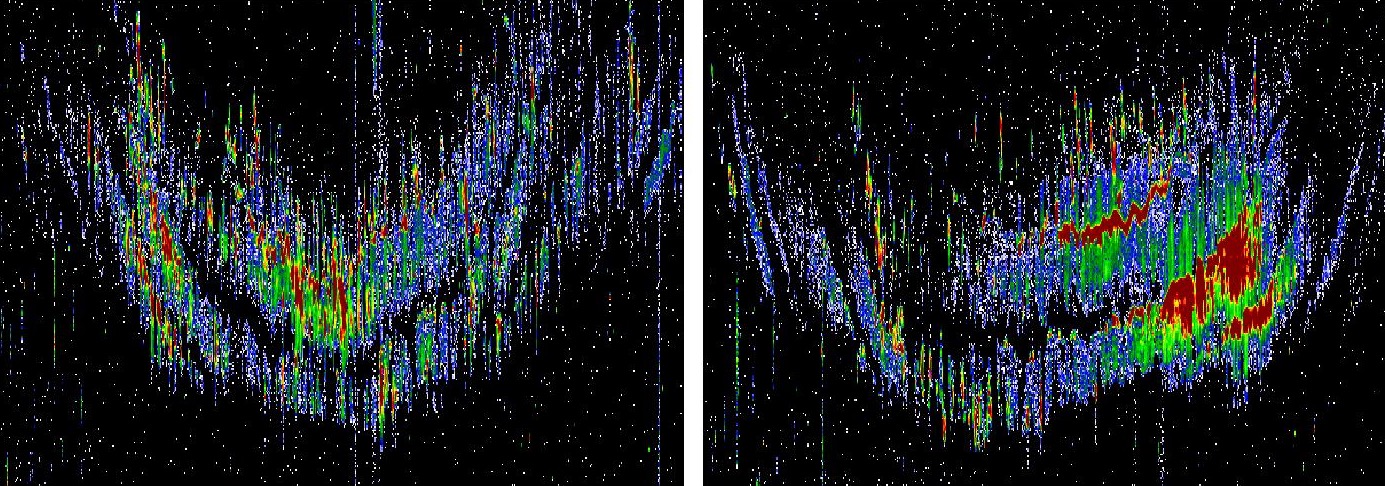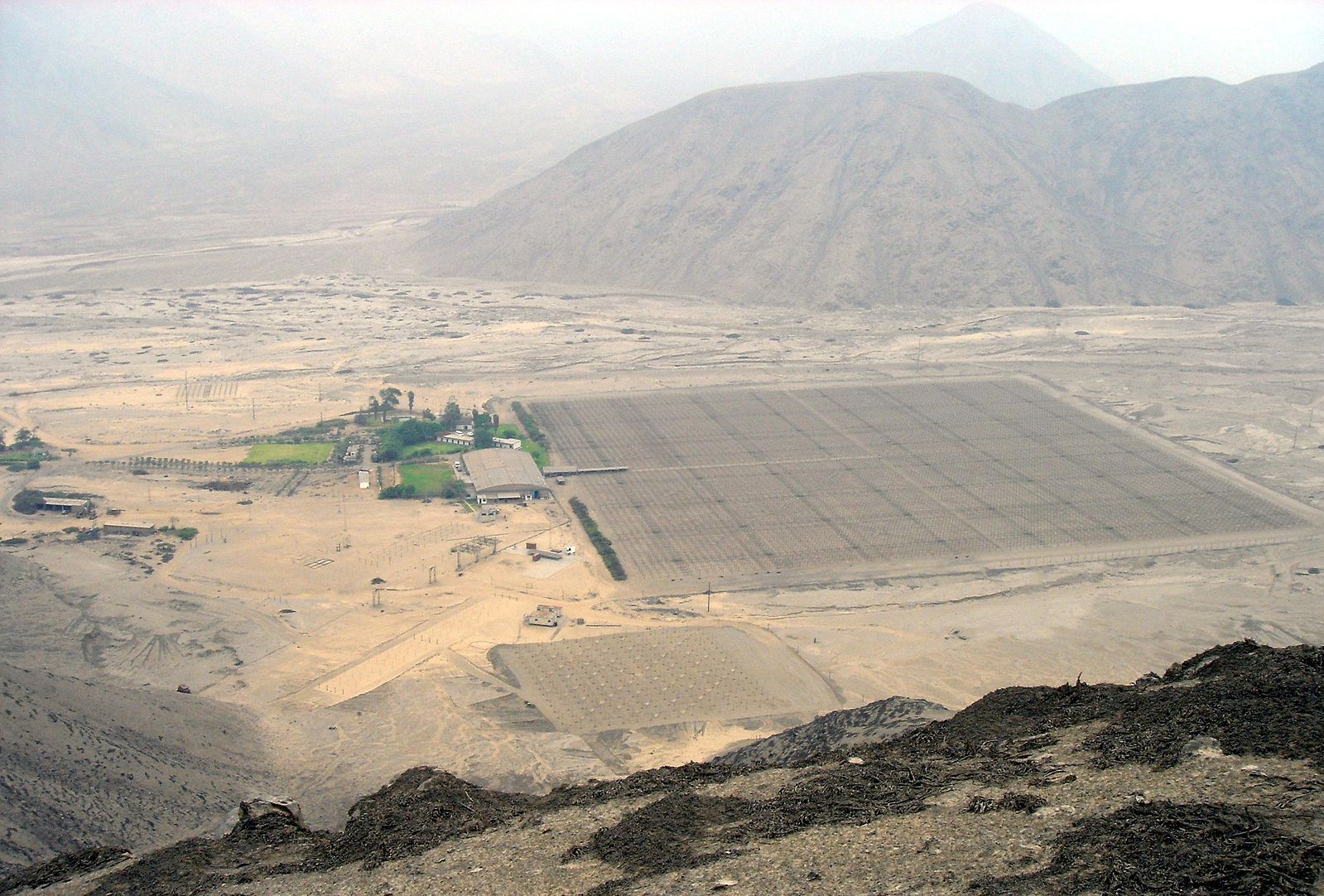Mystery of Bizarre Radar Echoes Solved, 50 Years Later

More than 50 years after weird radio echoes were detected coming from Earth's upper atmosphere, two scientists say they've pinpointed the culprit. And it's complicated.
In 1962, after the Jicamarca Radio Observatory was built near Lima, Peru, some unexplainable phenomenon was reflecting the radio waves broadcast by the observatory back to the ground to be picked up by its detectors. The mysterious cause of these echoes was sitting at an altitude of between 80 and 100 miles (130 and 160 kilometers) above sea level.
"As soon as they turned this radar on, they saw this thing," study researcher Meers Oppenheim, of the Center for Space Physics at Boston University, said, referring to the anomalous echo. "They saw all sorts of interesting phenomena that had never been seen before. Almost all of it was explained within a few years." [In Photos: Mysterious Radar Blob Puzzles Meteorologists]
Peculiar radar echoes
Though the other phenomena detected by the observatory got explanations, these radar echoes continued to baffle scientists.
To see what was happening at that altitude, researchers at the time sent rockets, equipped with antennas and particle detectors, through the region. The instruments, which were designed to detect radar waves, "saw almost nothing," Oppenheim said.
Adding more peculiarity to the puzzle, the phenomenon showed up only during daylight hours, vanishing at night. The echo would appear at dawn every day at about 100 miles (160 km) above the ground, before descending to about 80 miles (130 km) and getting stronger. Then at Noon, the echo would start to rise back again toward its starting point at 100 miles above the ground. When plotted on a graph, the echoes appeared as a necklace shape.

And in 2011, during a partial solar eclipse seen over the National Atmospheric Research Laboratory in India, the echo went silent.
Get the world’s most fascinating discoveries delivered straight to your inbox.
"And then there was a solar flare, and it sort of went a little nuts," Oppenheim said. "There was a solar flare, and the echo got really strong."
The sun takes charge
Now, with a lot of supercomputing effort, Oppenheim and Yakov Dimant, also at the Center for Space Physics, have simulated the bizarre radar echoes to find the culprit — the sun. [Infographic: Explore Earth's Atmosphere, Top to Bottom]
Ultraviolet radiation from the sun, it seems, slams into the ionosphere (the part of Earth's upper atmosphere located between 50 and 370 miles, or 80 and 600 km, above sea level), where the radio echoes were detected, they said. Then, the radiation, in the form of photons (particles of light), strips molecules in that part of the atmosphere of their electrons, resulting in charged particles called ions — primarily, positively charged of their electrons, resulting in charged particles called ions, primarily positively charged oxygen — and a free electron (a negatively charged particle that is not attached to an atom or molecule).
That ultra-energized electron, or photoelectron, zips through the atmosphere, which, at this altitude, is much cooler than the photoelectron, Oppenheim said.
Making waves
Using a computer simulation, the scientists allowed these high-energy electrons to interact with other, less energized particles.

Because these high-energy electrons are racing through a cool, slow environment in the ionosphere, so-called kinetic plasma instabilities (turbulence, in a sense) occur. The result: The electrons start vibrating with different wavelengths.
"One population of very energetic particles moving through a population of much less energetic particles — it's like running a violin bow across the strings. The cold population will start developing resonant waves," Oppenheim explained.
"The next step is that those electron waves have to cause the ions to start forming waves too, and they do," Oppenheim said.
Though this last step isn't clearly understood, he explained that periodic waves of ions bunch up with no dominant wavelength winning out. "It's a whole set of wavelengths; it's a whole froth of wavelengths," he said.
That "froth" of wavelengths was strong enough to reflect radio waves back to the ground and to form the mysterious radar echoes.
"The reason it wasn't figured out for a long time is that it's a complicated mechanism," Oppenheim said.
As for why the rockets missed the bizarre echoes, Oppenheim pointed to the messy nature of the waves.
"Turns out, it looks like what the rockets saw is what we see with our simulation," he said. "You don't see strong coherent waves. What you see is sort of a froth of low-level waves, above the noise of thermal material," and those waves are sort of like "foam on the top of sea waves," he added.
Follow us @livescience, Facebook & Google+. Original article on Live Science.
Jeanna Bryner is managing editor of Scientific American. Previously she was editor in chief of Live Science and, prior to that, an editor at Scholastic's Science World magazine. Bryner has an English degree from Salisbury University, a master's degree in biogeochemistry and environmental sciences from the University of Maryland and a graduate science journalism degree from New York University. She has worked as a biologist in Florida, where she monitored wetlands and did field surveys for endangered species, including the gorgeous Florida Scrub Jay. She also received an ocean sciences journalism fellowship from the Woods Hole Oceanographic Institution. She is a firm believer that science is for everyone and that just about everything can be viewed through the lens of science.
